Management > QUESTIONS & ANSWERS > MGT 330 FINAL EXAM STUDY GUIDE (All)
MGT 330 FINAL EXAM STUDY GUIDE
Document Content and Description Below
Chapter 1: Criminal: purpose: to punish. Against society (government involved and represents victim in court) Burden of Proof on government to prove defendant guilty Beyond a Reason... able Doubt Civil: usually only 2 Parties purpose: to compensate. Burden of Proof is on the plaintiff to show the evidence by the Preponderance of the Evidence Chapter 3: Complaint- what needs to be in a complaint: –Within statute of limitations –Describe statement of claim –Establish Jurisdiction –Establish Venue Types of discovery: Interrogatories Request for /subpoena of documents Request for admission. Depositions: taking of sworn, out-of-court oral testimony of a witness that may be reduced to a written transcript for later use in court or for discovery purposes. Voir Dire: jury slection Jurisdiction All types (NC and Federal): Fed: Federal Court Jurisdiction: U.S. Magistrate–Specialized Courts – Fed. District Court Jurisdiction:•U.S. is a Party •Federal Question•Diversity of Citizenship- involving citizens of different states and over $75,000- note use law of which state where injury occurred– U.S. Court of Appeals– U.S. Supreme Court- limited original jurisdiction/ Rule of 4 required for writ of certiorari NC: Civil: Magistrate (Small Claims)$10,000 or less (appeal to District Court) District: Over $10,000- $25,000(appeal to N.C. Court of Appeals) Superior- over $25,000 (appeal to N.C. Court of Appeals) Criminal: District- misdemeanors are tried (appeal to Superior for brand new trial)• Superior- misdemeanor appeals (for brand new trial) and felonies (appeal to N.C. Court of Appeals) •D. Exclusive versus Concurrent Jurisdiction: exclusive jurisdiction exists where one court has the power to adjudicate a case to the exclusion of all other courts. It is the opposite situation from concurrent jurisdiction (or non exclusive jurisdiction), in which more than one court may take jurisdiction over the case. Standing to Sue: YOU must be the one injured to be able to sue in personam: different ways that the court in a civil case can have power to hear a case against a defendant subject matter: authority of a court to hear cases of a particular type or cases relating to a specific subject matter. For instance, bankruptcy court only has the authority to hear bankruptcy cases. Chapter 4: 14th Amendment: Limits state action and everyone is given equal protection under the law Bill of Rights: Limits fed. Gov’t power Commerce Clause: Regulates foreign and interstate commerce Due Process: the legal requirement that the state must respect all legal rights that are owed to a person. 14th amendment Eminent Domain: State has right to take property if it has a public use or benefit thru condemnations. Owner of the land must get compensation. 5th amendment Health Insurance Portability and Accountability Act of 1996 (HIPAA): provides data privacy and security provisions for safeguarding medical information. Preemption (supremacy clause): within Article VI of the U.S. Constitution which dictates that federal law is the "supreme law of the land.” Police Powers: capacity of the states to regulate behavior and enforce order within their territory Chapter 5: Tort: a civil wrong where there is a breach of duty which causes harm to another Types of damages: Punitive and Compensatory Defamation (an intentional tort): Libel (in writing): a published false statement that is damaging to a person's reputation; a written defamation Slander and Slander Per Se (spoken): slander: the action or crime of making a false spoken statement damaging to a person's reputation. Slander per se: charges the plaintiff with a serious crime. Disparagement of Property: done to harm a person’s business. False Imprisonment: only exception is shopkeeper’s privilege: shopkeeper is allowed to detain a suspected shoplifter on store property for a reasonable period of time, so long as the shopkeeper has cause to believe that the person detained in fact committed, or attempted to commit Negligence- All Elements and All Defenses: 4 Elements: (All 4 required): 1. Def. had a duty to act in a reasonable 2. Def. breached his duty - Def. failed to act in a Reasonable Way and injury was forseeable 3. Proximate Cause (But/For test) – But for Defendant’s actions plaintiff would not have gotten hurt- Def. CAUSED plaintiff’s injury 4. Plaintiff was injured/damaged (Plaintiff is seeking compensatory damages) Defenses: Neg.- NC uses Comparative Neg.-NC doesn’t use Act of God Governmental (Sovereign) Immunity Assumption of Risk Res Ipsa Loquitor: Facts speak for themselves Chapter 6: Exclusionary Rule: illegal/ unconstitutional entry in violation of constitutional rights is called the “poison tree” what is taken by law enforcement after illegal entry is called “fruit of poison tree” and should be excluded from coming into evidence during trial Crime- required elements of a crime: Mens Rea (guilty mind) + Actus Reus (guilty act) required Chapter 7: Force Majeure Clause: stipulating which unforeseen events- ex./ war...will excuse the party for nonperformance Act of State: every sovereign state is bound to respect the independence of every other sovereign state, and the courts will not sit in judgment of another government's acts done within its own territory Foreign Sovereign Immunities Act/ exceptions exist: act to define the jurisdiction of United States courts in suits against foreign states, the circumstances in which foreign states are immune from suit and in which execution may not be levied on their property, and for other purposes OPIC: Insurance available through US govt. called - Overseas Private Investment Corporation Sovereign immunity: the sovereign or state cannot commit a legal wrong and is immune from civil suit or criminal prosecution Expropriation: the action by the state or an authority of taking property from its owner for public use or benefit. Confiscation: Expropriation without consent Comity: a practice among different political entities" involving the "mutual recognition of legislative, executive, and judicial acts United Nations Convention on Contracts for the International Sale of Goods (CISG): provide a modern, uniform and fair regime for contracts for the international sale of goods Forum selection: which court/ jurisdiction Chapter 10 and Chapter 11: be able to identify which contract law-10 • Common Law: real estate and services • Uniform Commercial Code (UCC): the body of laws governing commercial transactions in the US. (uses article 2- sale of goods) • Contracts from International sale of goods: (uses Contract for International Sale of Goods (CISG) instead of article 2 of UCC) The CISG helps you work with other businesses and consumers located throughout the world. Contract Elements: Offer + Acceptance + Consideration + Capacity + Legal = Contract Contract Defenses: 1. Unilateral Mistake: contract still enforceable (ex: person signs to sell a house for less than its worth because he/she was mistaken of value) 2. Mutual Mistake: contract not enforceable (ex: person wants to buy boat, but seller is thinking of different boat) 3. Fraud (I Miss My Jelly Doughnuts) • Intent • Misrepresentation • Material Fact • Justifiable Reliance • Damages 4. Innocent Misrepresentation: Same as fraud, but without intent 5. Undue Influence- 11: Taking advantage of someone ex: someone with dementia 6. Duress: Threat of physical force or criminal action 7. statute of frauds- 11: certain kinds of contracts must be in a writing (500$ or more) parol evidence rule-11: The parol evidence rule governs the extent to which parties to a case may introduce into court evidence of a prior or contemporaneous agreement in order to modify, explain, or supplement the contract at issue. Verbal promises cannot be used as evidence know the types of contracts (from power point presentation)- 10 • Bilateral: promise for a promise • Unilateral: promise for an act • Express: terms are spelled out verbally or in writing • Implied: in fact- implied from the conduct of the parties • Quasi Contract: implied at law- to prevent unjust enrichment. an obligation of one party to another imposed by law independently of an agreement between the parties. • Executory/ Executed: terms of contract completion. contract made by two parties in which the terms are set to be fulfilled at a later date. • Void: contract element is missing • Voidable: one party can get out of the contract • Unenforceable: valid contract that cannot be enforced Chapter 12: Article 2 of the UCC: • Express warranty: Clearly stated guarantee and seller’s opinion is “Puffery” • Implied warranty of merchantability: • Implied warranty of fitness for a particular purpose: Strict product liability- be able to list and explain each of the required elements: • Damage: product is in a defective condition when sold • May: sold by a Merchant • Develop: good is Dangerous, because of defective condition • If: Injury to Plaintiff • Person: Proximately caused injury • Consumes: no Change in good when it left merchant and went to consumer Magnuson Moss Act: standardized full and limited warranties for sale of consumer goods caveat emptor: the principle that the buyer alone is responsible for checking the quality and suitability of goods before a purchase is made. statute of repose: statute that cuts off certain legal rights if they are not acted on by a specified deadline Chapter 14: Sole proprietorship: sole owner of the business. All profits, but full liability Partnerships: 2 owners with joint and indv. liability. Taxed once limited partnerships: One general partner (total liability) and one limited partner (liable to amount of investment and not allowed to participate in managment). Limited Liability Partnership (LLP): Liable for own acts and taxed once Limited Liability Company (LLC): Has tax advantages of partnership or can choose to be taxed as corporation with limited liability of amount of investment. Considered a “citizen” of every state of the members. Management can be member managed (all the members participate in management) or manager managed (the management group can consist of both members and nonmembers or of just nonmembers) Chapter 15: Corporate veil: separates the personality of a corporation from the personalities of its shareholders, and protects them from being personally liable for the company's debts and other obligations. Piercing the corporate veil or lifting the corporate veil is a legal decision to treat the rights or duties of a corporation as the rights or liabilities of its shareholders. Corporate Opportunity Doctrine: the legal principle providing that directors, officers, and controlling shareholders of a corporation must not take for themselves any business opportunity that could benefit the corporation. Characteristics of Corporations: • Officers and Employees run the daily operation and answer to the board/ Directors manage the firm/ and shareholders elect the directors • Constitutional Rights of Corporations- same constitutional rights but not right against self- incrimination • Limited liability of shareholders: protected by “corporate veil” to amount put into corporation Exception- when “corporate veil is pierced” • Taxation- double taxed: corporate income + shareholder dividends • Torts and Criminal Acts- corp can be liable for torts and crime committed by its agents/ officers w/in the course and scope of their employment Business Judgment Rule: helps to guard a corporation's board of directors from frivolous allegations about the way it conducts business Chapter 16: Employee vs. Independent Contractor: For the employee, the company withholds income tax, Social Security, and Medicare from wages paid. For the independent contractor, the company does not withhold taxes. Employment and labor laws also do not apply to independent contractors. Contract Liability for Principal/agent: Principal liable for Agent’s authorized acts. P liable when A acts with apparent authority Agent authority: 1. Express Authority: Principal grants agent orally or in writing 2. Implied Authority: Principal intends agent to have reason to carry out expressed authority 3. Apparent Authority: Principal’s actions make a third party assume that agent has authority Negligent retention and negligent hiring: 1. Employ unfit or incompitant employee 2. Employee commits a tort 3. Causes injury to the plaintiff 4. Employer should’ve known employee was unfit respondeat superior: employer is liable for acts of employees performed within the course of their employment Chapter 17: National Labor Relations Act (NLRA): protect the rights of employees and employers (mainly employees) closed shop, union shop, right to work: • Closed shop: firm that requires union membership as a condition of employment (illegal) • Union Shop: firm that requires all workers to become union members within a period of time as a condition of continued employment • Right to work law (NC): employees can choose whether or not to join a union Employment at Will and Exceptions: • Employee can be fired or quit at any time • Exceptions are: o Implied Contract: contract that is non verbal o Whistleblowing protection against retaliation given by statute o Public Policy Exception (coman): If you are employed at will, but employer is forcing you to break the law, then you can sue. Family Medical Leave Act and FMLA: company with 50 or more workers within 75 miles and the worker must have worked 1250 hrs. in the last 12 months. Time allowed is 12 weeks (newborn, death etc.) NLRB- 3 main functions: • Conducts union Elections • Investigates unfair labor practices • Determines Collective bargaining units Steps in union elections: If union gets majority vote, the union is certified as a bargaining representative for all employees in that unit. OSHA: Insures health and safety of employees Chapter 18: Disparate impact: labor law refers to practices in employment, housing, and other areas that adversely affect one group of people of a protected characteristic more than another, even though rules applied by employers or landlords are formally neutral (unintentional) Disparate treatment: Disparate treatment is one kind of unlawful discrimination in US labor law. In the United States, it means unequal behavior toward someone because of a protected characteristic under Title VII of the United States Civil Rights Act. Religious discrimination: Employer must reasonably accommodate to someone’s religion unless it will cause employer to suffer Pregnancy Discrimination Act of 1978: prohibit sex discrimination on the basis of pregnancy. The Act covers discrimination "on the basis of pregnancy, childbirth, or related medical conditions. Americans with Disabilities Act (ADA): • Title I (deals with employment (15 or more employees) A. Protects otherwise qualified disabled employees or job applicants B. Employer must reasonably accommodate the person unless it causes undue hardship C. Complain to EEOC Age Discrimination In Employment Act (ADEA) (please note ADEA is different that the ADA): protects certain applicants and employees 40 years of age and older and must have 20 or more employees Equal pay Act of 1963: amending the Fair Labor Standards Act, aimed at abolishing wage disparity based on sex Civil Rights act of 1991: it provided for the right to trial by jury on discrimination claims and introduced the possibility of emotional distress damages, while limiting the amount that a jury could award. sexual harassment types: • Quid pro quo: a favor or advantage granted or expected in return for something. (ie. Sex) • Hostile environment Title VII of Civil Rights Act of 1964: Employers with 15 or more employees cannot discriminate against employees or job applicants. Protected classes are: race, color, religion, sex, national origin, etc. Chapter 19: Administrative Procedures Act (APA): spells out the steps federal agencies must follow when creating laws (called regulations) Administrative Agencies: lawmaking bodies with limited powers delegated by Congress. Administrative agencies specialize in specific issues that require expertise. Administrative agencies are established by Article 1 Section1 of the federal constitution Exhausting administrative remedies: the following steps are called “exhausting your administrative remedies An aggrieved party should pursue all administrative remedies before filing a lawsuit in civil court to resolve the disagreement. When all other available remedies are exhausted, then a party can proceed for filing a law suit. Freedom of Information Act (FOIA): provides that any person has a right, enforceable in court, to obtain access to federal agency records. Chapter 20: Deceptive Advertising: Reasonable consumer misled by advertising FTC: To prevent unfair advertising/ deceptive advertising NC Theft Identity Protection Act: a series of broad laws that was passed by the General Assembly of the U.S. state of North Carolina to prevent or discourage identity theft as well as guarding and protecting individual privacy. Cooling off period: your right to cancel for a full refund extends until midnight of the third business day after the sale when the sale is conducted at a place other than the retailer's usual place of business or permanent retail location. Chapter 21: Attractive Nuisance: applies to children trespassers required elements: artificial condition/ on your land/ that you know about/ young children frequent the area/ a child gets injured that is too young to appreciate the danger/ AND the landowner failed to take steps reasonably necessary to protect against trespassing children CERCLA/ SUPERFUND: federal government program designed to fund the cleanup of sites contaminated with hazardous substances and pollutants. Applies to buyer of land Chapter 23: Antitrust law: a collection of federal and state government laws that regulates the conduct and organization of business corporations, generally to promote fair competition for the benefit of consumers. Covenant not to compete: clause under which one party (usually an employee) agrees not to enter into or start a similar profession or trade in competition against another party (usually the employer) Robinson-Patman: prohibits anticompetitive practices by producers, specifically price discrimination. rule of reason violations: whether restraint is reasonable or not. Sherman Act: antitrust law passed by Congress under the presidency of Benjamin Harrison, which regulates competition among enterprises. The Sherman Act broadly prohibits (1) anticompetitive agreements and (2) unilateral conduct that monopolizes or attempts to monopolize the relevant market. per se violations: Blatant “on their face” violations Clayton: Act (1914) that provides further clarification and substance to the Sherman Antitrust Act of 1890. The Act focuses on topics such as price discrimination, price fixing, and unfair business practices. Chapter 24: Foreign Corrupt Practices Act of 1934: anti-bribery + requires additional accounting procedures be followed- Securities act of 1933 (33 Act): to ensure more transparency in financial statements so investors can make informed decisions about investments; and to establish laws against misrepresentation and fraudulent activities in the securities markets. Securities Exchange act of 1934 (34 Act): (applies to co.s w/ $10M in assets and 500 or more shareholders) was created to govern securities transactions on the secondary market, after issue, ensuring greater financial transparency and accuracy and less fraud or manipulation. 10(B) and Rule 10(b)5: prohibit Insider Trading are Anti-Fraud 16(B): restricts officers and insiders of a company from making short-term profits at the expense of the firm. It is part of United States federal securities law, and is a prophylactic measure intended to guard against so-called insider trading. Sarbanes- Oxley Act of 2002 (SOX): purpose is to increase corporate accountability by requiring harsh disclosure requirements and penalties for violations of securities laws SEC- mission: to ensure adequate disclosure [Show More]
Last updated: 2 years ago
Preview 1 out of 9 pages

Buy this document to get the full access instantly
Instant Download Access after purchase
Buy NowInstant download
We Accept:

Reviews( 0 )
$10.50
Can't find what you want? Try our AI powered Search
Document information
Connected school, study & course
About the document
Uploaded On
Aug 21, 2020
Number of pages
9
Written in
Additional information
This document has been written for:
Uploaded
Aug 21, 2020
Downloads
0
Views
143

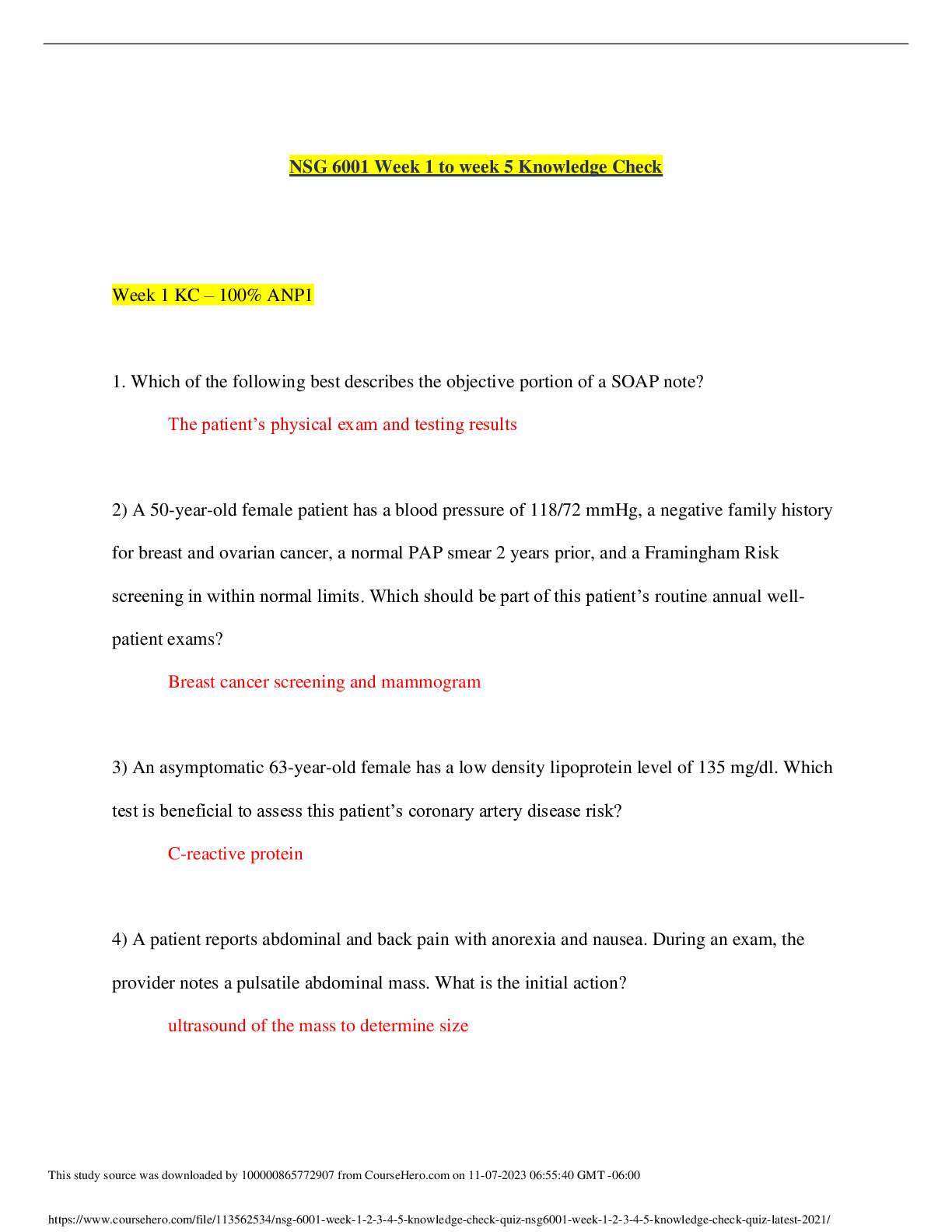

 (Diane Pacitti etc.png)
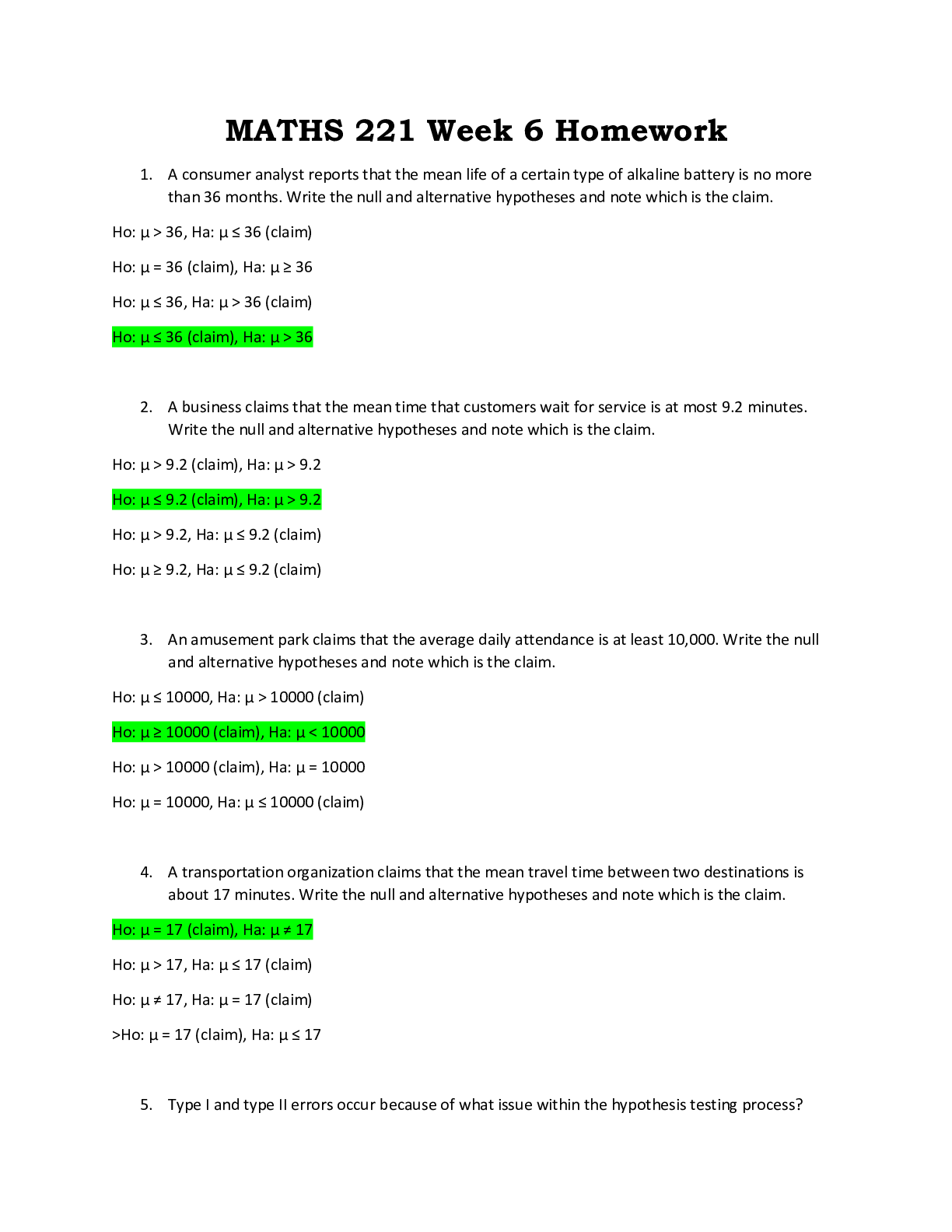












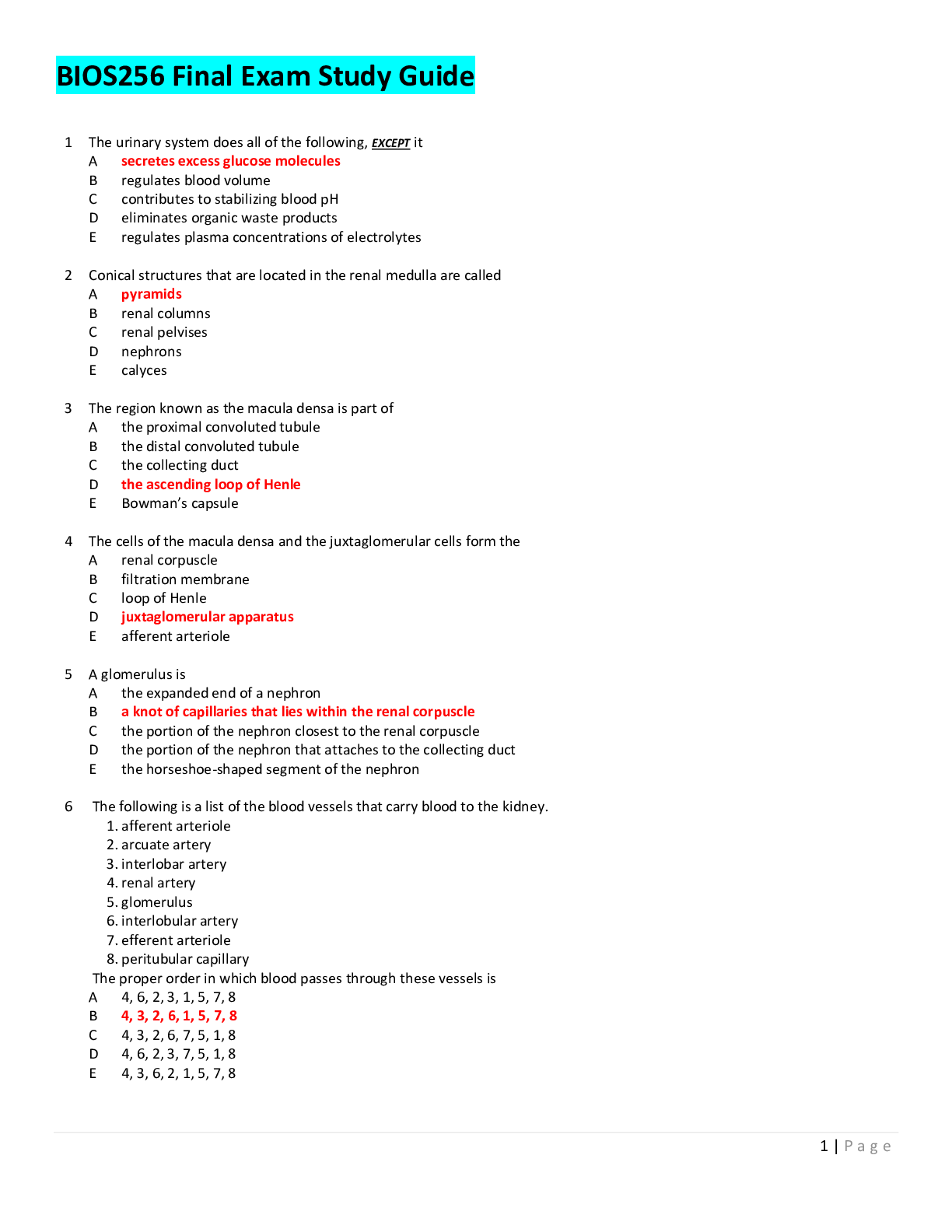


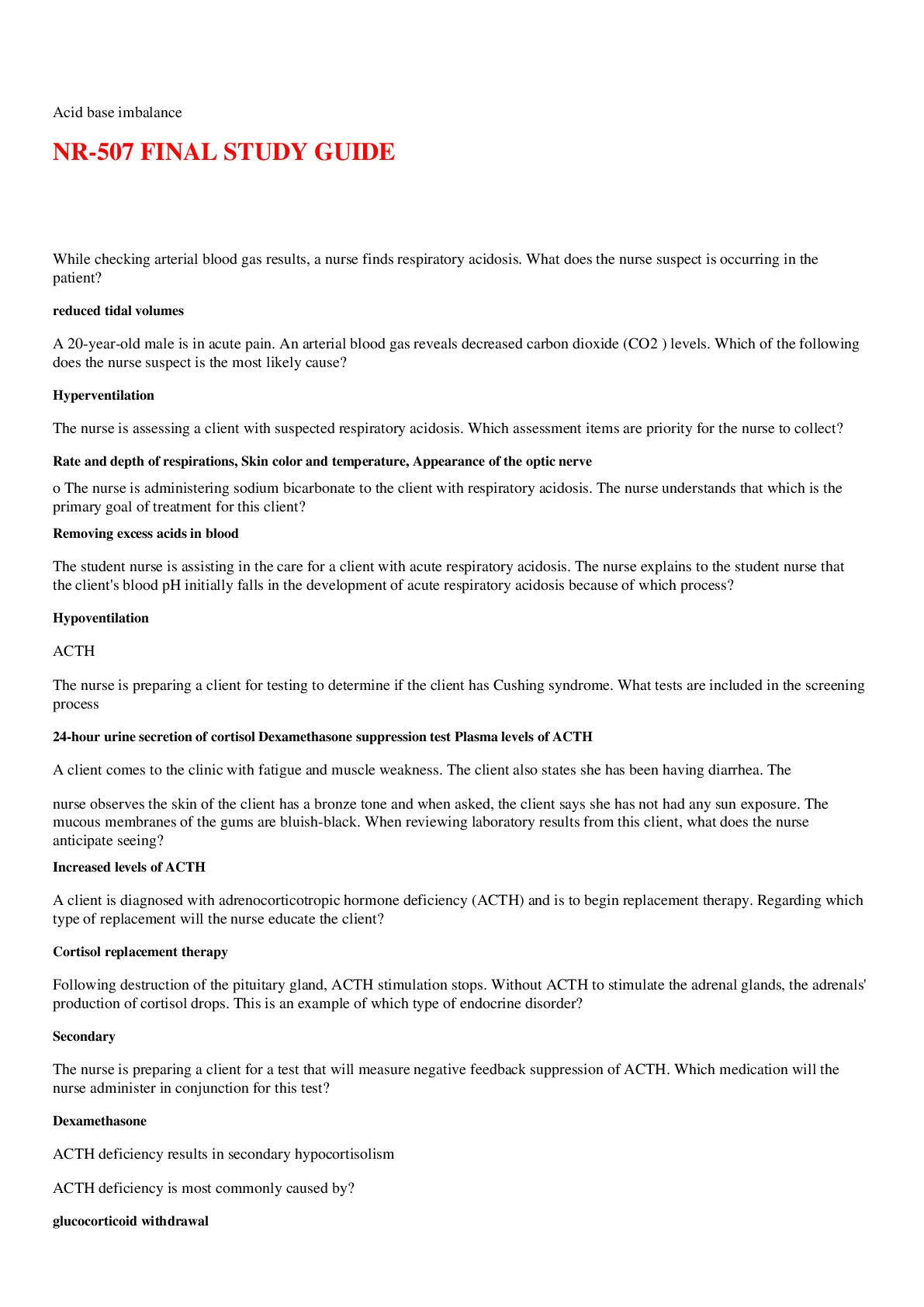
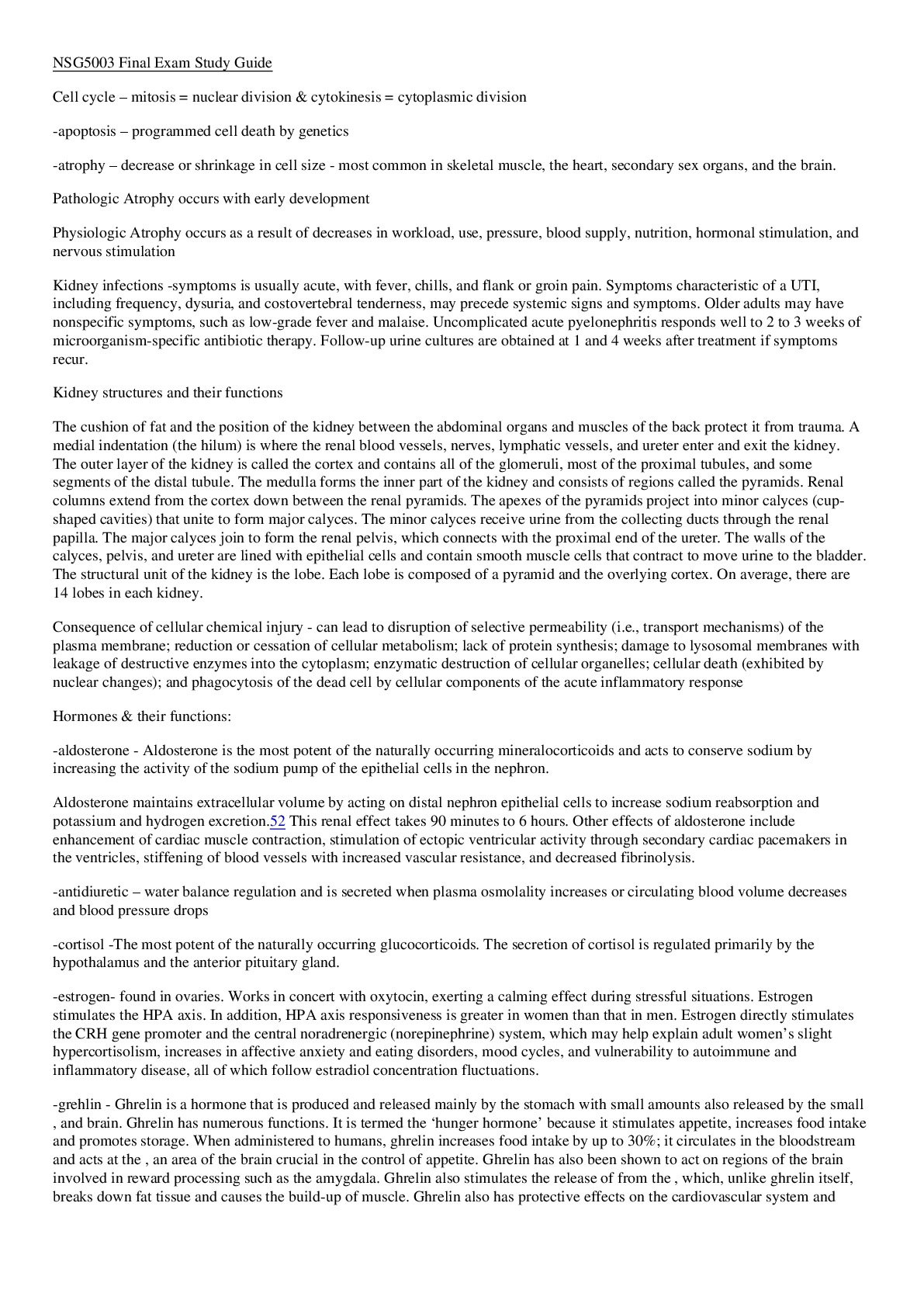
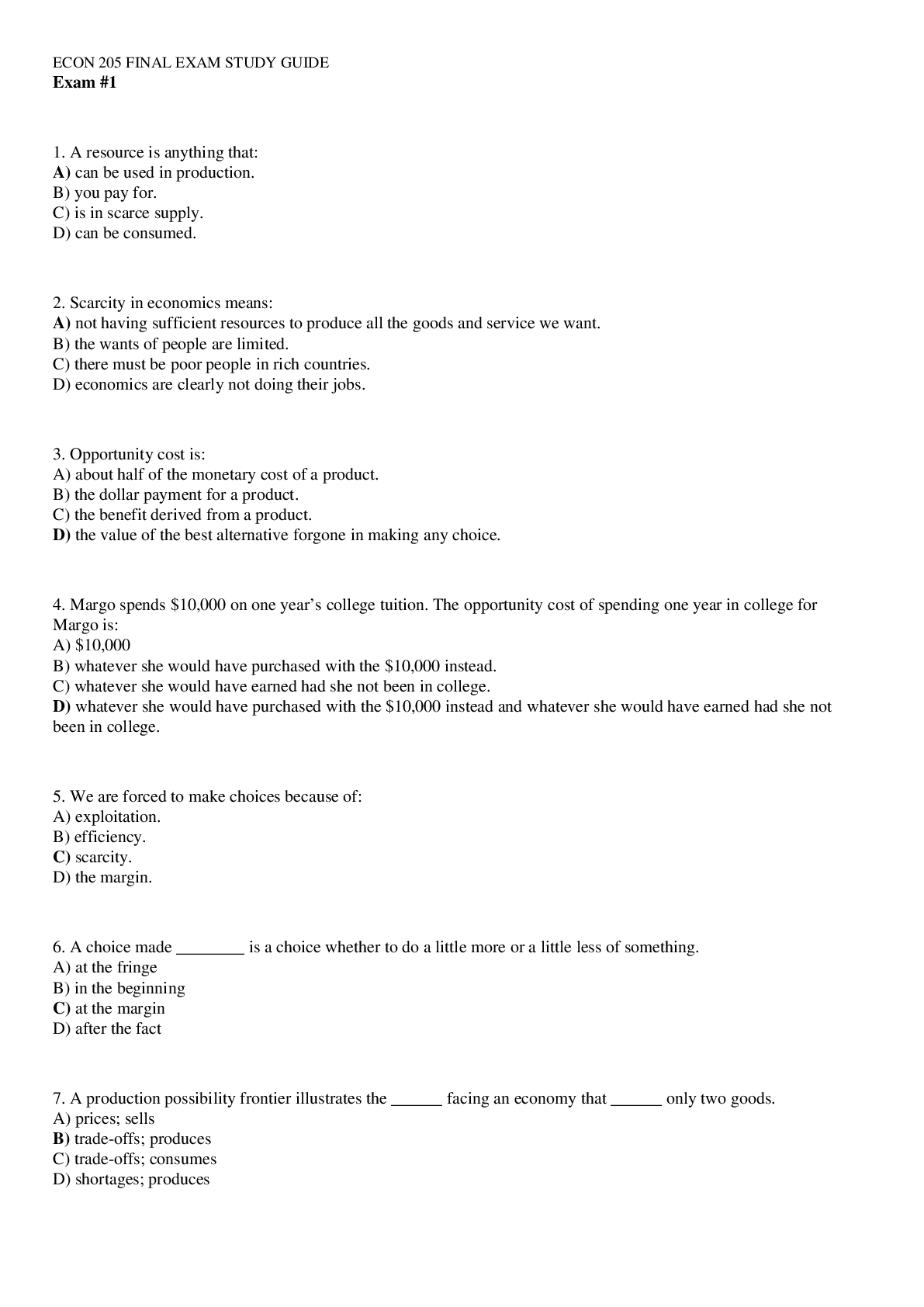
.png)


